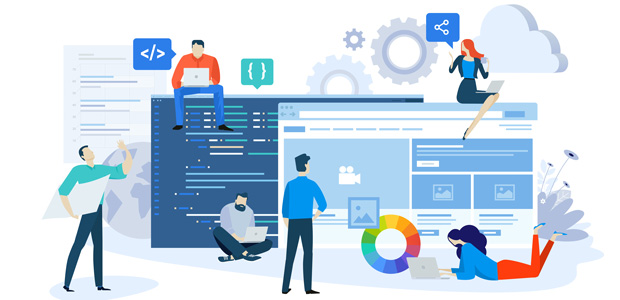
3 roles of the Analysis and Design team in software development projects
According to the Project Management Institute, project success depends on whether it’s delivered on time and the cost doesn’t exceed its budget. It’s even more important to consider if the delivered IT product works as it was intended, people within the company can use it and it ultimately meets that goal that drove the project initially.
With that in mind, creating an interdisciplinary team with the perfect mix of skills is vital to the favourable execution of any project, which is where the Analysis and Design team comes into play.
These teams consist of Business Analysts, Software Architects and User Experience experts, providing an analytical approach and innovative creativity.
Introducing a multidisciplinary team
The Analysis and Design team have a number of different roles within software development projects. This is because every product requires a tailored approach at every stage of its life cycle - beginning with the identification of business goals behind, identification of users needs, through to building the vision and product design, the development phase, and the maintenance stage of the implemented solution.
1) User Experience
Firstly, the team will need to consider user experience and if the software will help the client solve their current issues. The Analysis and Design team will need to make sure that the application is easy to use and if it makes the client more efficient in the longer term.
Not only will this process consist of analysing user behaviour, but it also takes into consideration the whole user journey along with an environment where the software will be used in order to put client and users' needs in the centre of the whole software development, and deliver excellent user experience.
2) Technical Output
The Analysis and Design team also have technical dependencies to incorporate, by ensuring that the software works as it was intended, it was delivered on time and on budget.
This will incorporate a number of tasks for the team, from researching, designing, implementing, and managing software programs, to identifying areas for modification in existing programs and subsequently developing these software adjustments.
3) Business Requirements
Finally, they will need to evaluate the business’ needs and ensure that the software development meets the goals that drove the project from the very beginning.
Bespoke software solution is ideal for targeting specific problems and can provide a company with possibilities to grow, but it’s vital for the Analysis and Design team to ensure that the project stays on course.
Considerations for seamless software
When it comes to the deployment of a development project to production, it can be incredibly stressful for all parties considered. All failures from the field of users and business requirements can be avoided by conducting proper design phase with series of discovery workshops, user research, preparation of prototype and iterative usability testing.
The roles of the Analysis and Design team are allocated so that developers do not overlook errors due to requirements mismatch, time constraints and pressure. However, they are not full proof. This is why there are certain considerations that all developers must have at the forefront of their minds in every stage of a project.
Before any software is launched, the development team must ensure that it’s working sufficiently in the target infrastructure. Software needs to be tested in a staging environment, to double check that everything works as it should. The team should also consider doing a canary release. This is where they launch the software for a small subset of users, before rolling out to the client’s entire user base.
It is important to choose a limited group of trusted users, such as beta testers. Using this technique reduces risk, compared to introducing a new software version in full production. This process will also help to catch any errors that have fallen through the cracks, to make sure the project is delivered on time and in budget.
Teams must consider their approach to a quick rollback if required. After everything has been thoroughly tested and monitored, the software is ready for rollout. However, the development team’s job is not quite finished. It always pays to be on standby once a project is launched. Even after all the testing there is a chance that a singular error could have found its way through, and if that's the case, without a quick rollback plan in place, the project could be delayed, and costs will rise.
The time the rollout takes place is also crucial. For critical failures, a rollback is a quick but only temporary fix. The support team should always be able to react to critical errors in just minutes, or at most, within hours. By timing the release around off periods, like long weekends, staff will be on standby to make any necessary fixes, allowing for a smooth internal process.
Ultimately, the role of the Analysis and Design team is to ensure that delivered IT product works as it was intended, people within the company can use it and it ultimately meets that goal that drove the project initially. Thanks to a thoughtful and iterative approach to IT product design it also reduces the number of late, expensive changes therefore projects are able to reach time constraints and stay within budgets.
By creating an interdisciplinary team, day-to-day responsibilities that would weigh down the internal IT team can be streamlined with defined roles designated within. This combined with the expertise of an Analysis and Design team will lead to the successful execution of any project.

